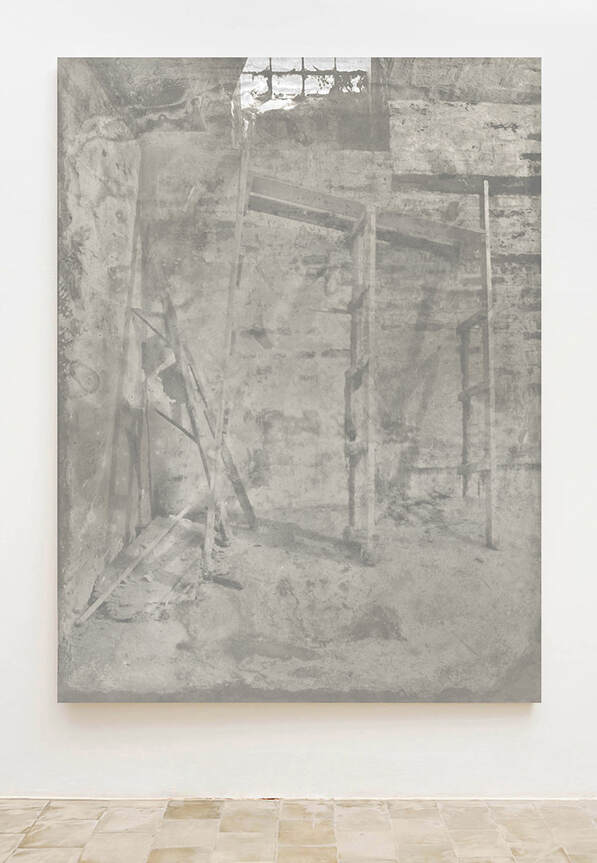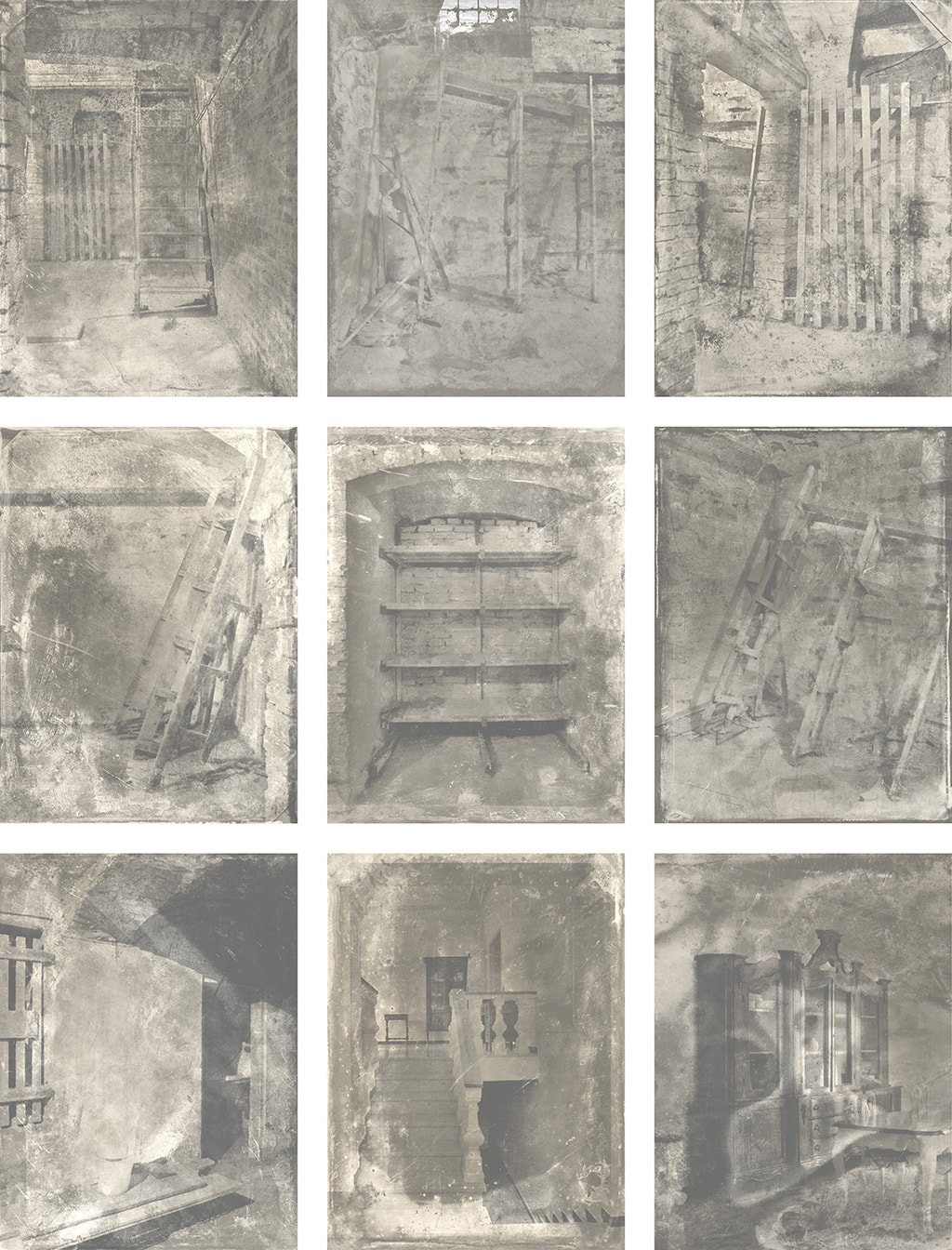installation view (rendering) | In un soffio | 2020 | 180x135 cm
In un soffio
|
2020 | 23 photographs treated with dust of the places portrayed | scans, fine-art prints on Hahnemühle Photo Luster paper, 180x135 cm each | inkjet prints on paper, 80x60 cm; 60x80 cm; 36x27 cm
Past, present and future are always deduced a posteriori or by anticipation in the traces deposited in places, objects or supports. A house that comes from the past - that of the artist - explored here in its most remote and underground dimension, is deprived of the fine accumulation of dust which, by now perfectly adherent to the forms of the building, prevents it from being immediately recognizable. The dust, a minimal and at the same time essential substance of matter, was collected and preserved following the cleaning action of the rooms and at a later time distributed on the photographs depicting those same places, thus translating into a “filler” material that declines the concept of waste, a pigmentation that forms small thicknesses on the surfaces to establish a sort of tactile writing. While the content of the images becomes purely material - impalpable and yet visible - these last seem about to crumble as if they were made of sand, as if they were fragments of interior views increasingly faded and vaporized in a rarefied dimension, almost inconsistent in its lightness. Everything is brought back to a zero level, brought back to a simple symbolic function: dust that buries itself in a self-referential and short-circuited process. So full of itself as to be “empty”. |
2020 | 23 fotografie trattate con polvere dei luoghi ritratti | scansioni, stampe fine-art su carta Hahnemühle Photo Luster, 180x135 cm ognuna | stampe inkjet su carta, 80x60 cm; 60x80 cm; 36x27 cm
Passato, presente e futuro si deducono sempre a posteriori o per anticipazione nelle tracce depositate in luoghi, oggetti o supporti. Una casa che proviene dal passato - quella dell'artista - qui esplorata nella sua dimensione più remota e sotterranea, viene privata del sottile accumulo di polvere che, ormai perfettamente aderente alle forme dell’edificio, ne impedisce l’immediata riconoscibilità. La polvere, sostanza minima e insieme essenziale della materia, è stata raccolta e conservata in seguito all’azione di pulitura delle stanze e in un secondo momento distribuita sulle fotografie raffiguranti quegli stessi luoghi, traducendosi così in un materiale “riempitivo” che declina il concetto di scarto, una pigmentazione che forma piccoli spessori sulle superfici fino a stabilire una sorta di scrittura tattile. Mentre il contenuto delle immagini si fa puramente materico - impalpabile e tuttavia visibile - queste ultime sembrano in procinto di sgretolarsi come fossero fatte di sabbia, come fossero frammenti di vedute interiori sempre più sbiadite e vaporizzate in una dimensione rarefatta, quasi inconsistente nella sua leggerezza. Tutto è riportato ad un livello zero, ricondotto ad una semplice funzione simbolica: polvere che seppellisce se stessa in un processo autoreferenziale e cortocircuitato. Talmente piena di sé da risultare “vuota”. |


